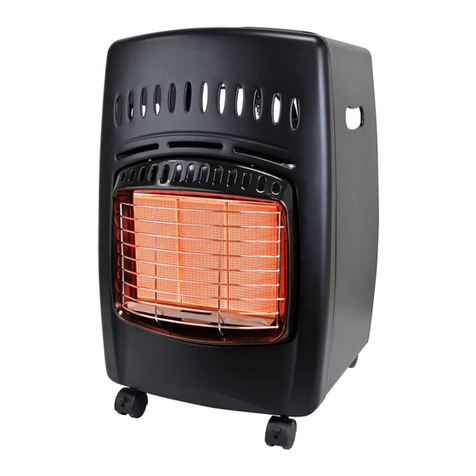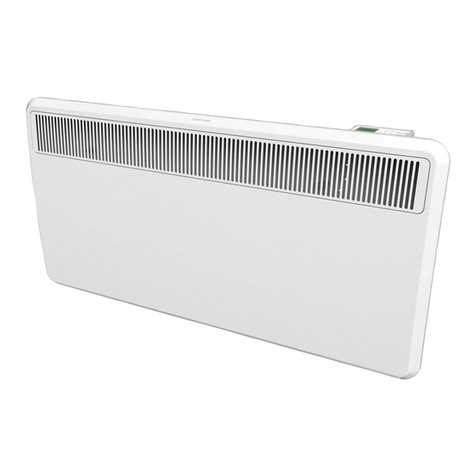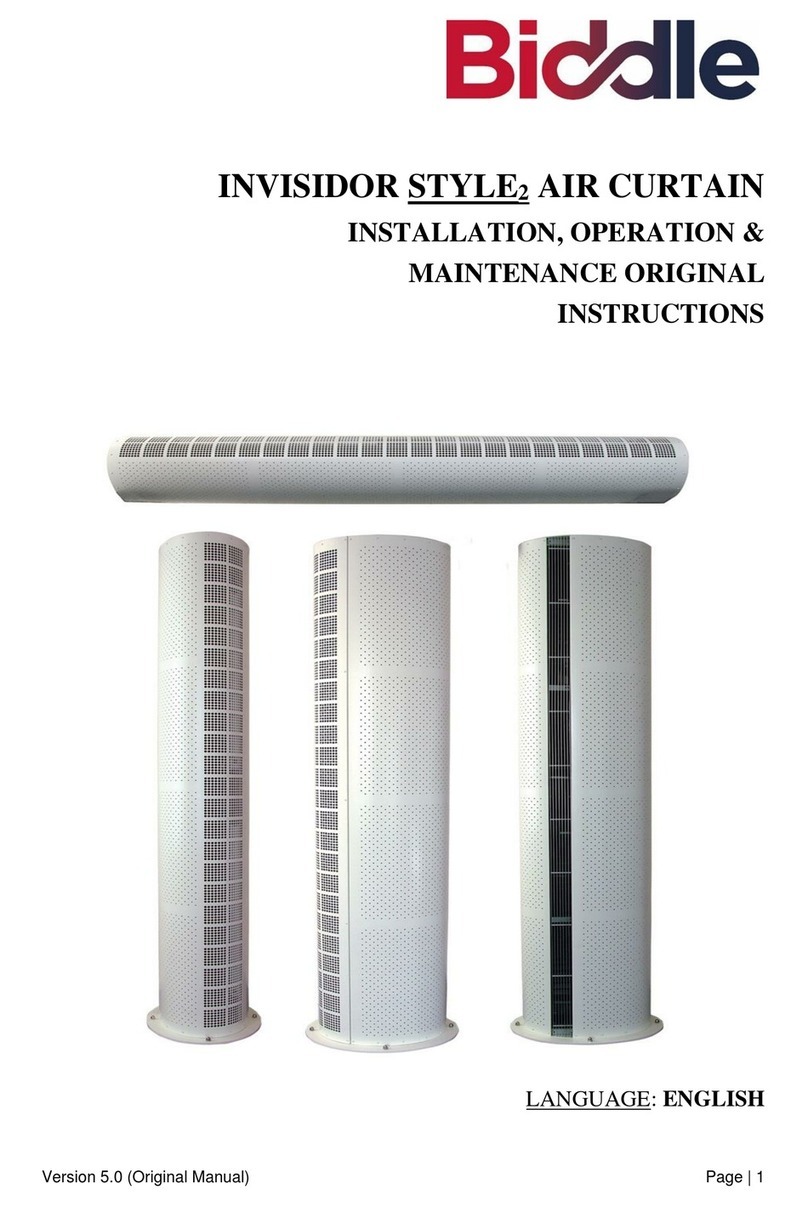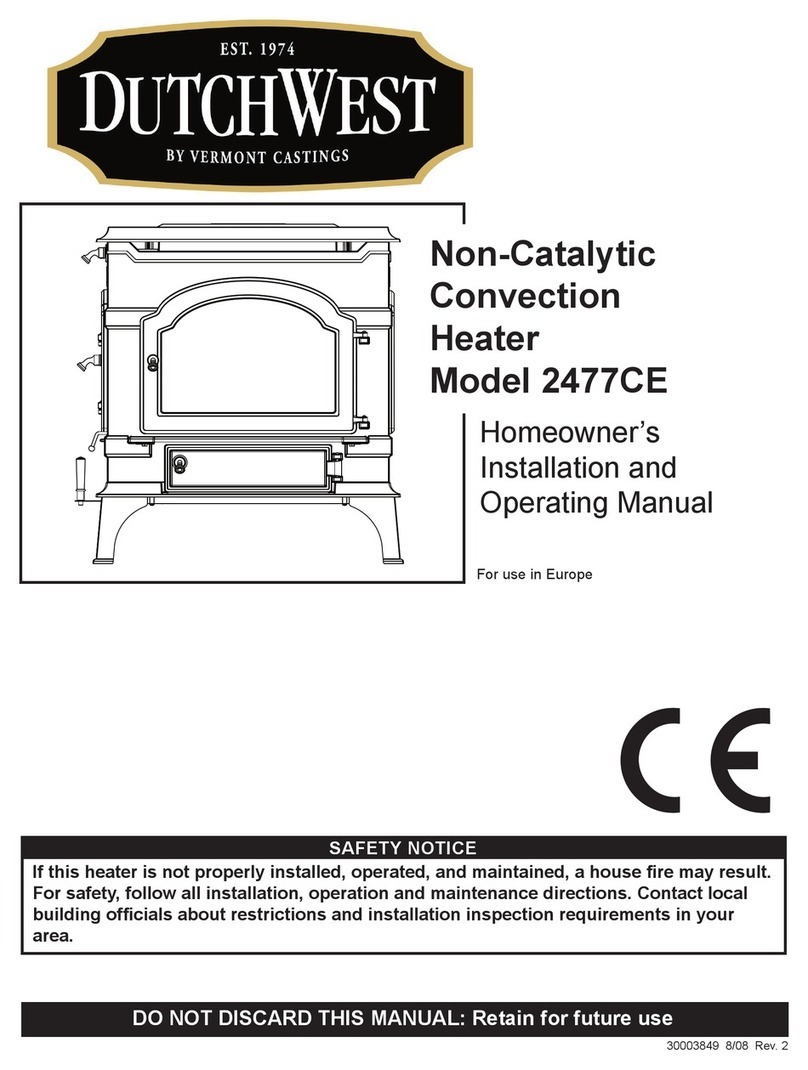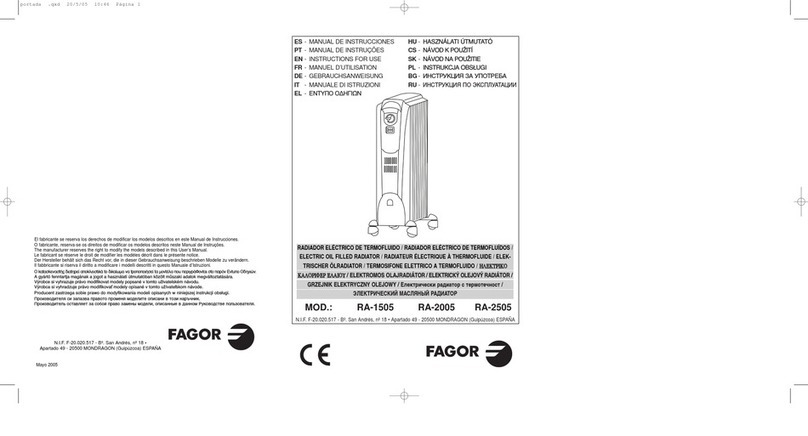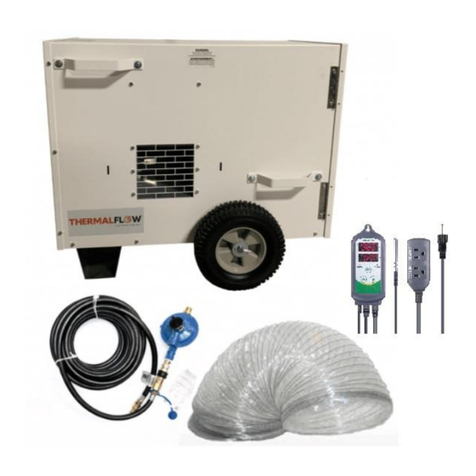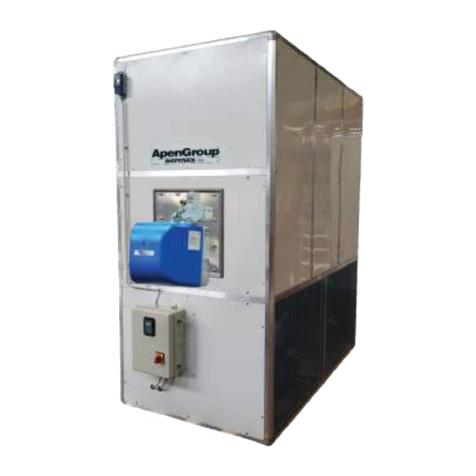
FT-C Vertical Electric Thermal Fluid Heater Manual 12 2013 ISSUE 1
During operation, any leaks are usually detected by a small
amount of vapour. Leaks should be attended to as soon
as possible because under certain circumstances, such as
saturated insulation, thermal uid can ignite when exposed
to air and heat.
Fulton Ltd cannot be held responsible in the case of
accident or damage resulting from the use of
inadequate uid.
Unless specially ltered, compressed air will introduce
moisture into the system. Dry air or Nitrogen is
recommended.
Some plastics can be dissolved by thermal uid.
Do not use system circulating pump for system lling.
A pump that has been used for water or for a
different thermal uid should not be used prior to
extensive cleaning. Thermal uid can be damaged by
contact with moisture or other uids.
Pressurising a drum to force uid into the system is not
recommended. The drum can easily explode, creating a
hazard to personnel and equipment.
Tanks are non-code as a standard. Non-code tanks
cannot be pressurised over 0.5 barg. Tanks built to
BS EN13445:2009 are available upon request.
Do not run the pump before lling it with uid.
1. Use extreme caution opening plug when system
temperature is elevated.
2. Wear eye and hand protection.
3. Back the plug out slowly to the last two or three threads.
Allow any pressure under the plug to bleed slowly to
prevent a spray of hot oil.
NoFlash steam may be generated at any point up to the
operating temperature. Watch for gauge uctuations.
All of the above maintenance procedures should be
completed by trained personnel. Appropriate training
and instructions are available from the Fulton Service
Department.
Obey all laws and local regulations which affect you and
your boiler.
Make sure that lifting equipment complies with all local
regulations and is suitable for the job. You can be injured
if you use faulty lifting equipment. Make sure the lifting
equipment is in good condition.
Operating the heater beyond its design limits can damage the
heater, it can also be dangerous. Do not operate the heater
outside its limits. Do not try to upgrade the heater performance
by unapproved modications. Unapproved modications can
cause injury and damage. Contact your Fulton dealer before
modifying the heater.
Only qualied persons should be allowed to operate and
maintain the boiler and its equipment.
Do not store or use gasoline or other ammable vapours
and liquids in the vicinity of this or any other appliances.
Thermal Fluid Heaters have high temperature surfaces, that
if touched may cause serious burns. Only competent and
qualied personnel should work on or in the locality of a
thermal uid heater and ancillary equipment. Always ensure
the working area and oor are clear of potential hazards,
work slowly and methodically.
Max. room temperature not to exceed 38 °C.
In no case should any part of the drive side of the
pump be insulated.
Max. operating temperature for air cooled pumps
varies by manufacturer. Consult instruction manual to
verify.
If the tank is located outdoors nitrogen is required.
High temperature thermal uid, steam and combustible
vapours may be vented through the DA vent connection.
Once the system has been lled, any modication to the
tank or connected piping requires purging of the work area
to prevent ignition of potentially ammable vapours. Consult
factory prior to beginning work. Consult the MSDS (mate-
rial data safety sheet) for your thermal uid for ammability
limits.
Unless the system is pressurised, the inlet to the
deaerator section of the combonation tank must be
higher than or equal to the highest point in the system
to prevent pockets of air from collecting in the system
piping.
!
!
!
!
!
!
!
!
!
!
!
Note: If the burner loses ame while driving to a point then:
• Turn the main ON/OFF switch to OFF. Reset the loss of
ame fault. Press Escape on the AZL once. Press Enter on
the AZL to reset the control. The red light on the panel box
door should go out.
• Adjust the air and gas servos for that point while the burner
is off. Follow steps 28-29.
• Turn the main ON/OFF switch to ON.

